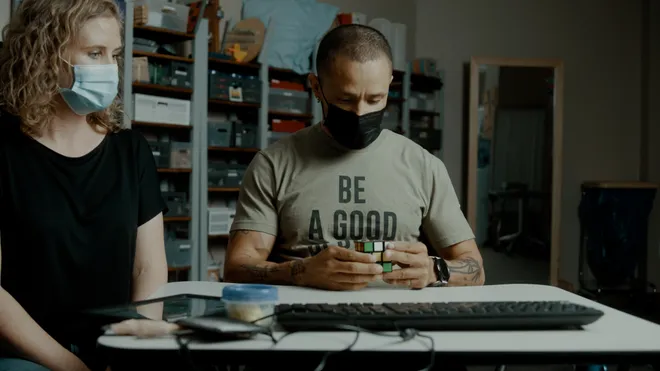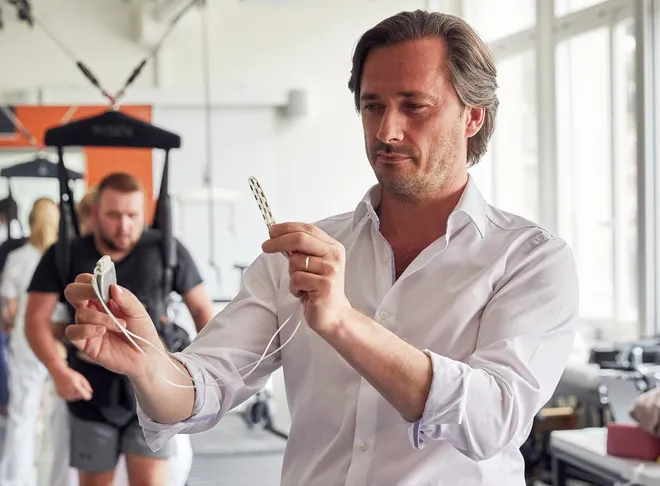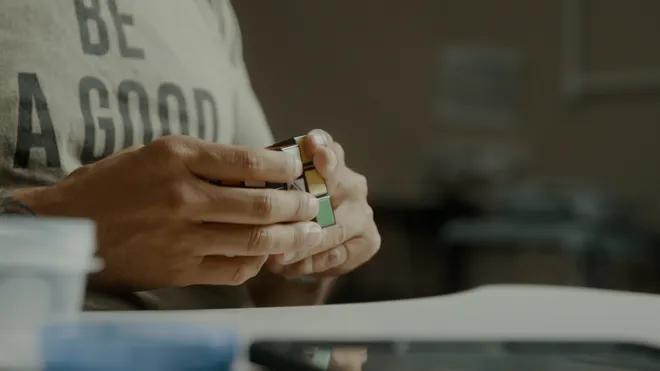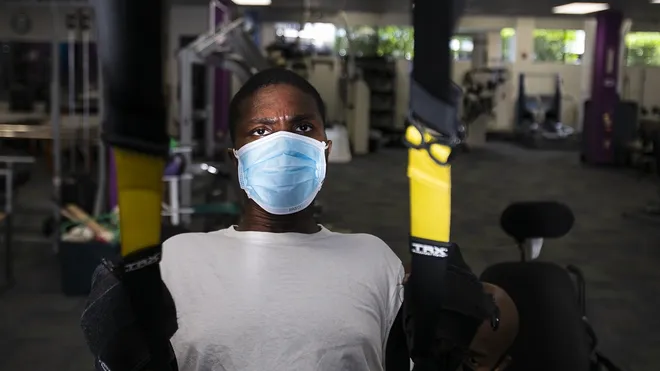They couldn't move their hands for years. A new device offers the promise of mobility.
For Melanie Reid, 67, the biggest change was being able to pull her hair back into a ponytail by herself again for the first time in 14 years. She no longer needs help unbuckling her seatbelt and she can scroll on her phone now with both thumbs.
Sherown Campbell, 41, credits the spinal cord stimulation he received with a 30% increase in his typing speed. "I'm kind of a tech geek," he said. The Castle Pines, Colorado, resident can also help out more in the kitchen now, grip the steering wheel better when he drives and tie balloons for his kids' birthday parties.
Both Reid and Campbell were participants in a clinical trial two years ago for people with spinal cord injuries. Reid had fallen from a horse and her left hand had been rendered completely useless. Campbell, a former software engineer and father of two, had no movement below his shoulders after a wrestling injury in 2014.
They were among 64 volunteers in the U.S., Europe and Canada some of whom had been injured as long as 30 years ago. All received an experimental form of spinal cord stimulation for 12 weeks, using a device that includes electrodes placed on the back of the neck and the front of the hips. It did not require any surgery.

More than 70% of participants improved on measures of both strength and function and 87% reported improvement in overall quality of life, according to a study published Monday in the journal Nature Medicine.
Although stimulation has been a standard part of the physical therapy toolbox for years, the ARC-EX Therapy device uses extremely high-frequency waves, Chet Moritz, a principal investigator on the trial told reporters on a call Thursday. This high frequency numbs the pain fibers in the skin, he said, allowing more signals to reach the spinal cord.
"It doesn't directly cause movement, but it makes it easier for people to move," said Moritz, a professor of electrical and computer engineering and rehabilitation medicine at the University of Washington. Improvements accumulate over time with the stimulation, he said, and when combined with intensive physical therapy, benefits last even after the stimulation is turned off.
Research on animals suggests the stimulation helps promote nerve growth and repairs some of the damage caused by the initial spinal cord injury, said Grégoire Courtine, co-founder of ONWARD Medical, which is working to commercialize the device.
About 18,000 Americans suffer spinal cord injuries every year and about 60% are left with limited or no hand or arm function, said Edelle Field-Fote, another researcher on the project and director of spinal cord injury research at the Emory University School of Medicine's Shepherd Center in Atlanta. "Even small improvements in hand function make a big difference in quality of life," she said.
If approved by the Food and Drug Administration, which Courtine said he expects will happen by the end of this year, the ARC-EX System will be the first spinal cord stimulation therapy to receive FDA approval for treating spinal cord injury patients.

Courtine is among a handful of researchers who have been working for decades to enable spinal cord injury patients to recover movement through electrical stimulation.
ONWARD is also testing other spinal stimulation approaches to improve mobility for patients with spinal cord injuries and Parkinson's disease.
Both Reid, a writer with the London Times, who lives in Scotland, and Campbell who lives outside of Denver, said they wished they'd had access to the device right after their injuries. Most recovery typically occurs in the first year after a spinal cord injury.
"It would have done me an enormous amount of good," Reid said. She remembers seeing people in the rehabilitation gym where she worked on her own recovery who could not feed themselves or scratch their noses when they itched. "Imagine how primary that is, how life-changing that is," to have a device that enabled them to do that, she said.

Both she and Campbell also wished they'd been able to access the system for longer than the 12 weeks of the study. Campbell, who also received an extra four weeks of stimulation in an at-home trial extension, said he continued the exercises after the study ended.
Reid, who described the workouts as "doing a Pilates class on your fingers," said she stopped but began using her left hand more in her everyday life. Both kept the gains they achieved during the research.
Moritz said that was true of most people in the study. The more they continued using the functions they gained during the study, the more likely they were to keep them long-term. "They were essentially giving themselves additional therapy," he said.
The gains might be even more substantial and longer-lasting with additional stimulation time, Field-Fote added.

Reid said the best part for her might have been the psychological change. Knowing that her body could still improve, even so many years after being paralyzed, she said, "it makes you hold your head up, your shoulders back and look at life a little bit differently."
Karen Weintraub can be reached at kweintraub@usatoday.com.
Disclaimer: The copyright of this article belongs to the original author. Reposting this article is solely for the purpose of information dissemination and does not constitute any investment advice. If there is any infringement, please contact us immediately. We will make corrections or deletions as necessary. Thank you.






